
Why in the world would someone spend the better part of a beautiful fall day to make eight small jars of jelly?
I like to think that it was, in some way, a nod to all those forebears of mine -- women who took pride in their plump and succulent preserves and found joy in a perfect pot of jam or the clear jewel-like glimmer of a jar of jelly.
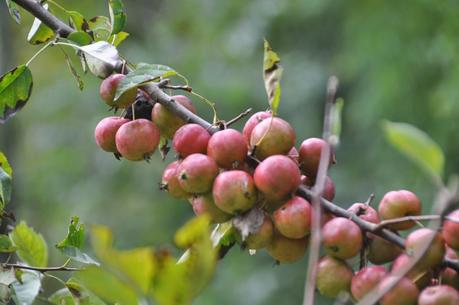
It began when I spotted that mystery fruit tree in the pasture HERE. It was indeed a wild crabapple and a few days ago I gathered as many of the charming little fruits as I could reach. They were absolutely perfect and unblemished -- unlike our regular apples.
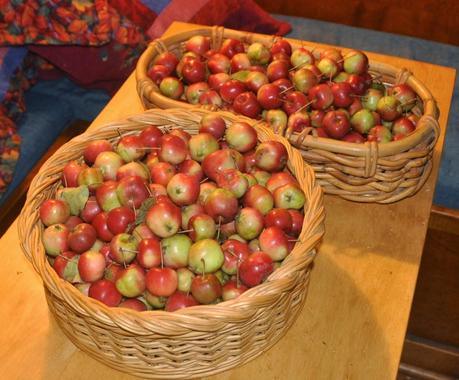
The time had come to make jelly -- something I've only done once or twice in my life and with less than inspiring results. But wild crabapple jelly -- it has such a romantic sound -- and I had to do something with all that fruit.
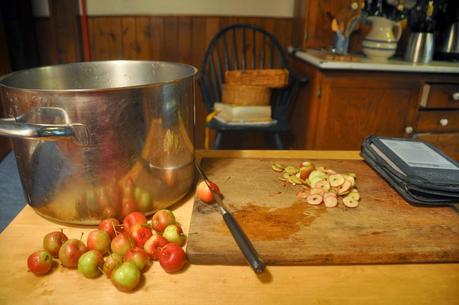
So while Neil Gaiman read his short stories to me through my Kindle, I removed stem and blossom ends and cut the tiny apples into quarters. It took a very long time. . .
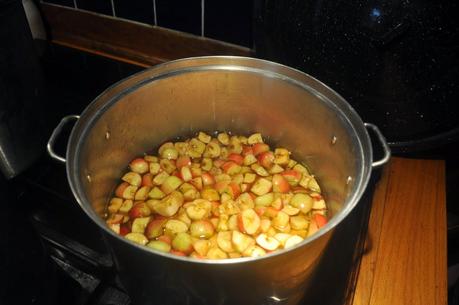 Heeding what the Ball canning book said about small batches, I put half the apple pieces into a pot with water to almost cover and boiled then simmered till the pieces were soft and had given up their juices.
Heeding what the Ball canning book said about small batches, I put half the apple pieces into a pot with water to almost cover and boiled then simmered till the pieces were soft and had given up their juices.
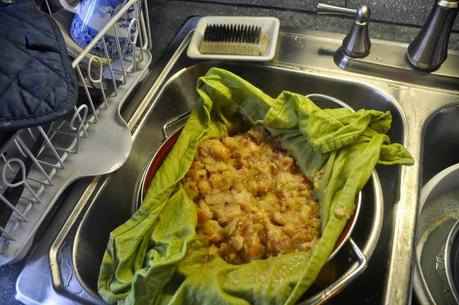
The pulp went into a dish towel- lined colander and some juice began to drip into the waiting bowl beneath but nothing near the four cups I'd been led to expect.
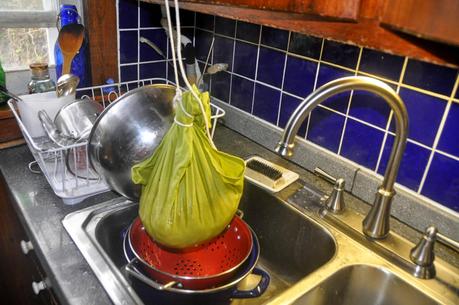
So I trussed it up to hang from a knob on the cupboard and more juice began to flow. I remembered the jelly bag hanging in my grandmother's kitchen in Tampa as every summer she made guava jelly to send to her sister in Alabama -- a partial return for the cane syrup and pecans and country sausage that made their way to Florida every year.
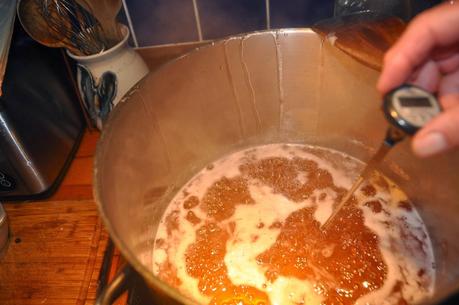
When at last I had four cups of juice, I added a great deal of sugar (I think it was 3 or 3 1/2 cups) and stirred and brought it to a boil. This is the exacting, almost alchemical, part of the process. In order to jell, the sugared juice has to reach 8 degrees Fahrenheit above the temperature of boiling water. And since that differs with altitude, the jelly maker is advised to determine it for herself. (It's 205 here -- so I was aiming for 213 as my jelling point.)
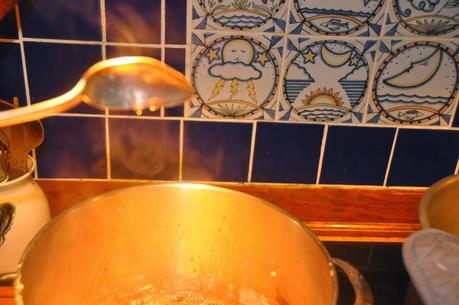
Or one can rely on the sheeting test -- dip a metal spoon in the hot liquid -- when the jelly begins to form two drips rather than one, you're close. Soon it will flake from the spoon in a sheet. and it's time to remove the jelly from the heat, skim off the white foam around the edges, and pour into sterilized, self-sealing jars -- four of them with a bit left over for tasting and breakfast. ( very good -- very sweet -- a little goes a long way.)
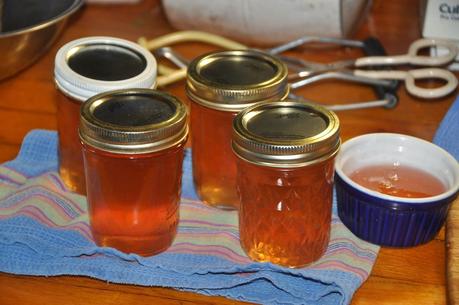
And then the second batch. I feel so in touch with my roots . . .

